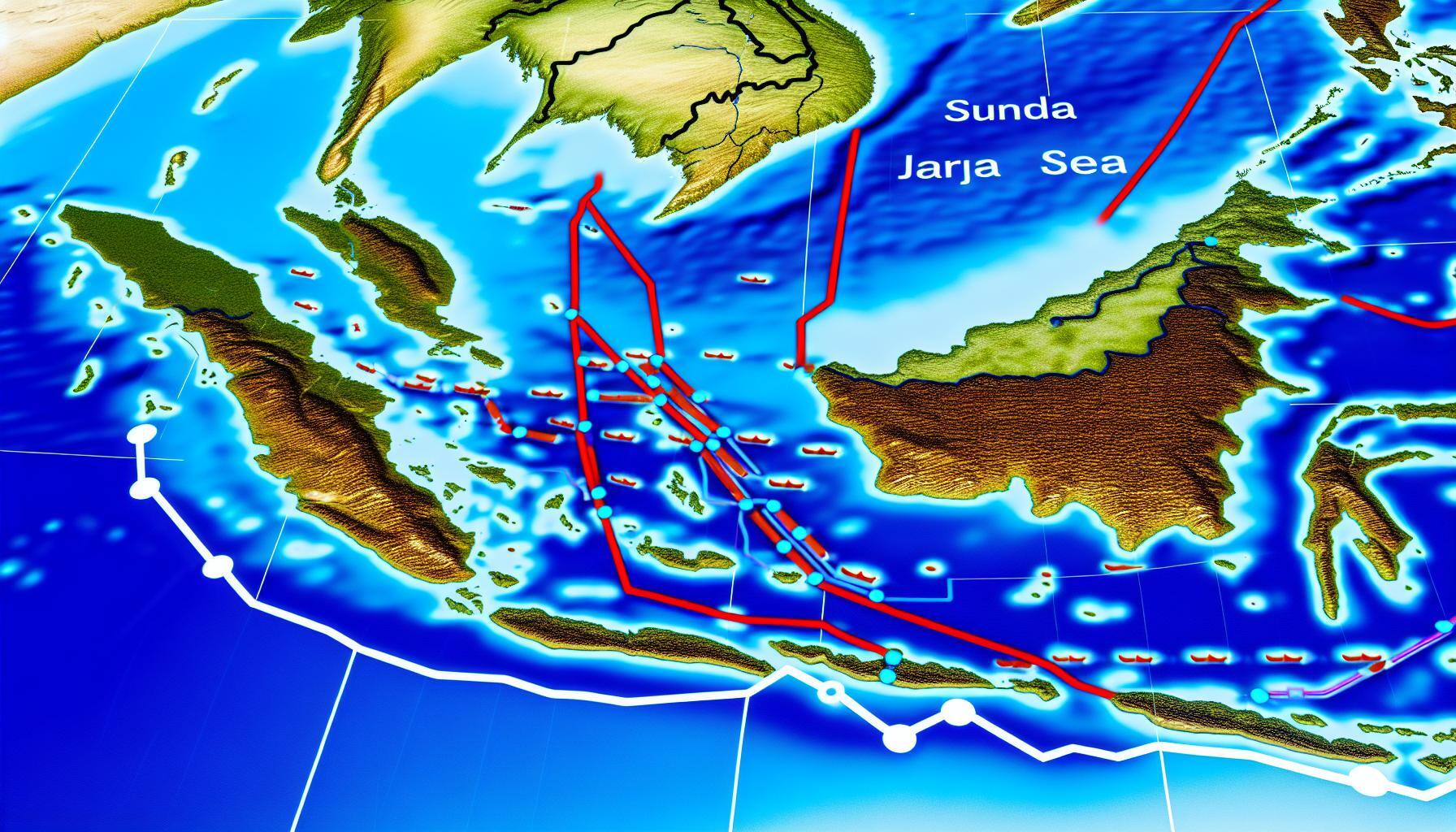The Sunda Strait, located between Java and Sumatra in Indonesia, serves as a vital maritime passage linking the Indian Ocean with the Java Sea.
This, by extension, also gives passage linking the South China Sea and the Pacific Ocean. While the Malacca Strait remains the primary route for shipping between the Indian and Pacific Oceans, the Sunda Strait offers a crucial alternative, particularly during times of congestion or conflict. Its geostrategic significance is underscored by the fact that it bypasses the high-traffic Malacca Strait, which is often plagued by piracy and geopolitical tensions.
Indonesia's role as the governing state over these waters is critical for ensuring the secure passage of global trade. The Sunda Strait's importance is amplified by the ongoing power struggles in the region, particularly between the United States and China. As a conduit for significant volumes of global trade, the strait's economic significance is considerable, especially given its role in transporting energy supplies, commodities, and manufactured goods.
Maritime security remains a paramount concern in the Sunda Strait, with the persistent threat of piracy influencing transportation costs and insurance rates. The strategic value of the strait also extends to military logistics, where it could function as a critical route for naval vessels and a strategic choke point during heightened regional tensions. The United States maintains a significant naval presence in the region, ensuring the security of key maritime routes alongside its allies. Meanwhile, China's Belt and Road Initiative, which includes enhancing maritime infrastructure, signals its strategic interest in these waters.
The broader regional context includes the strategic roles of the Andaman and Nicobar Islands and Sabang, Indonesia. The Andaman and Nicobar Islands, positioned at the eastern entry to the Malacca Strait, provide India with a strategic vantage point, bolstering its Act East Policy and countering China's regional influence. Similarly, Indonesia's development of Sabang as a maritime hub underscores its strategic vision, enhancing its role in regional security and trade.
The complex interplay of geopolitics, geoeconomics, and geostrategy in the Indo-Pacific region is further complicated by issues such as piracy, territorial disputes, and the potential construction of alternative routes like the proposed Kra Canal in Thailand. The U.S. and its allies, through initiatives like AUKUS, conduct Freedom of Navigation operations to maintain open maritime routes and counter excessive maritime claims, particularly by China in the South China Sea.
The dynamic between rising powers, notably China, and established powers like the United States, reflects the concept of the Thucydides Trap, where a rising power inevitably clashes with an established one. This is evident in the overlapping territorial claims and strategic ambiguity in the region. Additionally, greyzone initiatives, particularly between India and China, manifest through economic, territorial, and informational strategies, often avoiding direct military conflict but still influencing regional stability and power dynamics.
In conclusion, the Sunda Strait and its surrounding regions are pivotal in the Indo-Pacific's geopolitical landscape, serving as critical junctures in global trade and military strategy. The region's future will be shaped by the ongoing geopolitical chess game, where the balance of power and the quest for dominance continually evolve.

Source: Business Times





